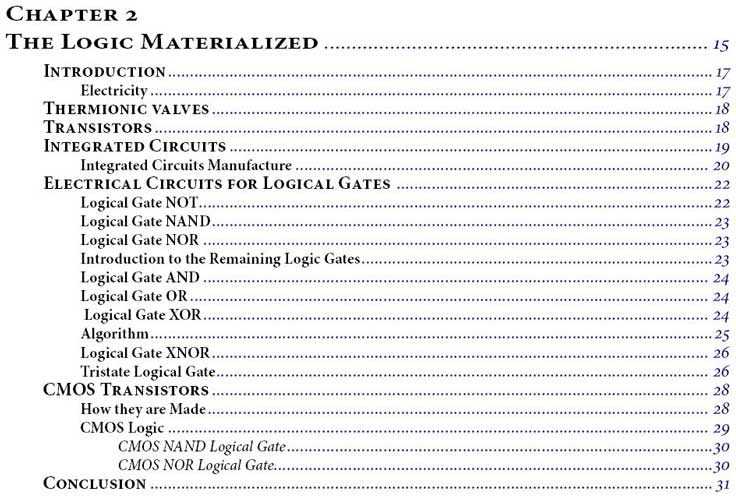The Logic Materialized – The Transistor
The computer is a machine that only understands the on or off states of a circuit . It doesn’t know what are logic gates, Boolean algebra and all the things that we created to simulate its behavior. That’s why we called them so far as mathematical abstractions.
So if the computer doesn’t understand them, what are the so-called abstractions useful for?
This is where the foundation of this Chapter’s title lies. Our abstractions are represented by the logic states 1 or 0 or by the philosophical duality true or false. The voltage states of electrical circuits are what the computer understands. With electrical circuits, we are going to find a way to simulate those abstractions into the corresponding powered or unpowered circuits states. They are the materialization of logical abstraction.
To achieve this materialization, we have to use switches in order to simulate the logic gates abstraction behavior. By turning them on or off we will turn the circuit state to powered or unpowered .
But, in order to do it, we’ll certainly need someone to turn on or off the switches according to the desired behavior for the logical gate. How is that?
Actually that’s what happened with the first computers. Someone connected or hung large relays establishing or cutting the communication between the switch two poles. It would be funny to see the poor fellow running from one side to another, all sweaty, engaging and disengaging relays.
It was like that, but nowadays it’s not, for a switch that the computer itself turns on and off was created. This way it can by itself, without the help of anyone, simulate for each logic gate the behavior it wants. This switch is called Transistor and is built into a material called Semiconductor. Semiconductor, because it can alternately take the behavior of a full conductive material or of a powerful insulator.
How is that? Normally, the known materials are insulators or conductors.
And this one too. In concrete it is an insulator, with a balanced crystal structure. With the difference that this material accepts the injection of unbalanced atoms into its balanced structure. Thus, trough the injection of positive or negative ionized atoms that will positively or negatively unbalance its atomic structure, we can make it conductor or insulator, as we intend in each situation. The material we are talking about is the Silicon and is obtained from one of the most abundant materials on earth, the sand.
The transistor quickly became the basis for the Computing Science growth. Each day smaller transistors are built. Its construction is nowadays and for some years in the field of nanotechnology, the technology that works in the nanometers dimension. A nanometer is so small as a grain of sand (as 1 nanometer) compared to the 1,000 Km of the Portuguese coast (as 1 meter). Today a transistor can have dimensions of about 22 nanometers. And going down.
The transistors are integrated in electrical circuits that simulate logic gates. The logic gates are integrated in bigger circuits that fulfill specific functions. These circuits are integrated in giant and complex circuits, created by successive interconnections, that fulfill the computer tasks. The complexity is the sum of elementary simplicities. To these now giant circuits in which the transistors are integrated, we call Integrated Circuits. The CPU’s Chip is one of them, perhaps the most complex, surpassing 2 billion transistors.
We will show how an integrated circuit is manufactured, so that we can better understand the transistors behavior as switches that are turned on or off as we apply or not voltage to its gate. We will show what it is and how it works, the silicon property that allows it the behavior that turns a transistor into a switch.
Then we will integrate the small transistors in simple and understandable circuits, for purely didactic purposes, electrically simulating each logical gate behavior. With these circuits we’ll simulate the behavior of logic gates such as NAND, NOR and NOT, the most simple and basic in terms of electrical construction and from which we can obtain all the other and therefore all the circuits of a computer. We will build the remaining logic gates AND, OR , XOR and XNOR , showing how they are built by combinations of the first ones.
Once finished this Chapter we’ll have certainly understood how the logic circuits obtained from our mathematical reasoning can become electronic circuits understandable by the computer. We are able to proceed.
See the global synopsis of this work
We introduce here the table of contents of the Paper Book to describe the themes approached in this Chapter

